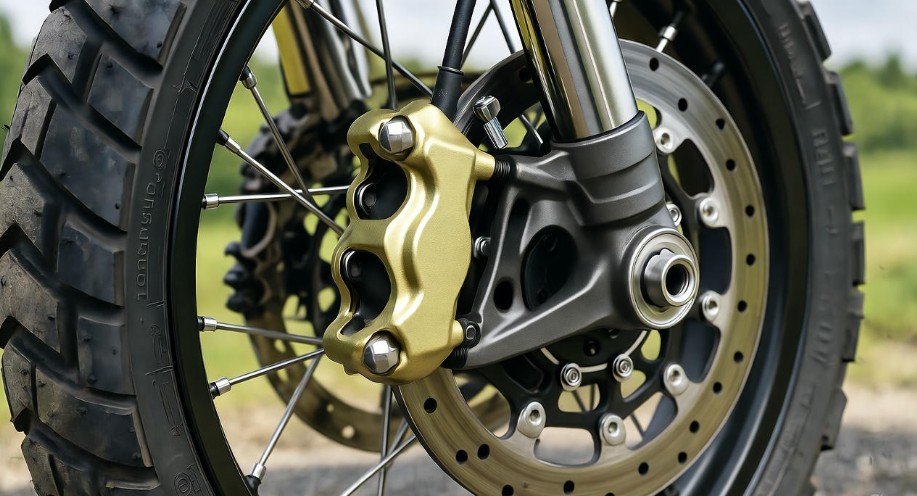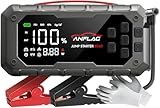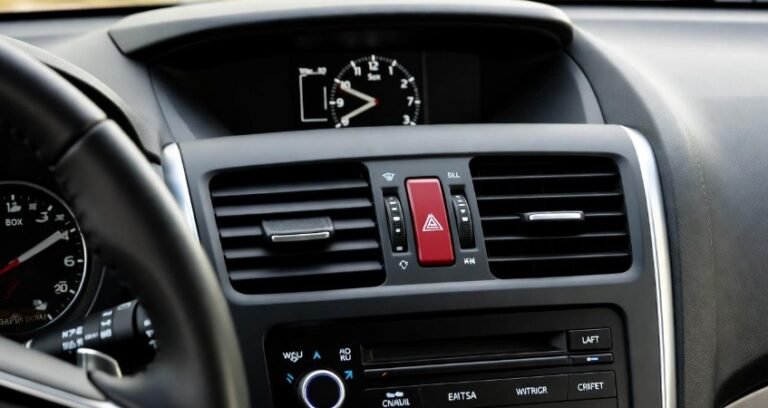Pulsar 180 Disc Brake Caliper Price

The Pulsar 180 disc brake caliper price can range from approximately $30 to $80 for a new, aftermarket part, with genuine Bajaj parts varying based on dealership and region. Prices also change based on whether you’re buying just the caliper or a complete assembly.
In This Article
- 1 Key Takeaways
- 2 Understanding Your Pulsar 180 Disc Brake Caliper
- 3 Factors Influencing Pulsar 180 Disc Brake Caliper Price
- 4 Estimated Pulsar 180 Disc Brake Caliper Price Range
- 5 Where to Buy Your Pulsar 180 Brake Caliper
- 6 Installation Costs and Considerations
- 7 Maintaining Your Brake Caliper for Longevity
- 8 When Do You Need to Replace Your Pulsar 180 Disc Brake Caliper?
- 9 Frequently Asked Questions (FAQs)
- 9.1 Q1: How often should I replace my Pulsar 180 brake caliper?
- 9.2 Q2: Can I just replace the brake pads if my caliper is leaking?
- 9.3 Q3: What’s the difference between a front and rear brake caliper for a Pulsar 180?
- 9.4 Q4: Is it cheaper to buy a caliper online or from a Bajaj dealer?
- 9.5 Q5: What are the risks of buying a used brake caliper?
- 9.6 Q6: Do I need to replace brake pads when I replace the caliper?
- 9.7 Q7: Can I use a brake caliper from a different Bajaj model on my Pulsar 180?
- 10 Conclusion
Key Takeaways
- Understand typical pulsar 180 disc brake caliper price ranges.
- Identify factors influencing the cost of your brake caliper.
- Learn where to buy genuine vs. aftermarket parts.
- Discover how to estimate installation costs.
- Find tips for extending the life of your brake caliper.
- Recognize when a caliper replacement is necessary.
When you ride your Bajaj Pulsar 180, you rely on its performance and safety features. Your braking system is paramount, and the disc brake caliper plays a crucial role in that. If you’ve noticed issues with your braking, you might be wondering about the Pulsar 180 disc brake caliper price for a replacement. It’s a common concern for motorcycle owners to understand the cost of essential parts. Navigating the world of motorcycle parts can sometimes feel complex, but we’re here to simplify it for you. This guide will break down the typical costs, what influences them, and where you can find the best deals. Let’s get your Pulsar 180 stopping as reliably as it should, without breaking the bank.
Understanding Your Pulsar 180 Disc Brake Caliper
Before diving into prices, it’s helpful to know what a disc brake caliper actually does. Think of your motorcycle’s brake system like a sophisticated team working together. The brake lever or pedal is the commander, sending signals. The brake fluid is the messenger, transmitting force underwater. And the brake caliper? It’s the enforcer.
When you apply the brakes, hydraulic pressure generated by the brake lever pushes brake fluid. This fluid then exerts pressure on the brake pads housed within the caliper. The caliper’s job is to clamp these pads firmly onto the spinning brake disc (rotor). This friction is what slows down and stops your motorcycle. A healthy caliper ensures this clamping force is applied evenly and effectively.
Common issues that might lead you to search for a “Pulsar 180 disc brake caliper price” include:
- Leaking brake fluid: This often indicates damaged seals within the caliper.
- Sticking brake pads: The caliper pistons might not be retracting properly, causing drag and uneven braking.
- Reduced braking performance: A worn or damaged caliper can’t apply enough force to the pads.
- Unusual noises during braking: While often pad-related, caliper issues can also cause grinding or squealing.
Recognizing these symptoms is the first step toward ensuring your bike remains safe and enjoyable to ride.
Factors Influencing Pulsar 180 Disc Brake Caliper Price
The cost of a Pulsar 180 disc brake caliper isn’t a single, fixed number. Several factors can cause the price to fluctuate. Understanding these can help you budget effectively and make informed purchasing decisions.
Genuine vs. Aftermarket Parts
This is perhaps the biggest differentiator in price.
- Genuine Bajaj Parts: These are manufactured by or for Bajaj Auto, ensuring they meet the exact specifications of your Pulsar 180. They often come with a higher price tag due to brand reputation, quality control, and guaranteed fitment.
- Aftermarket Parts: These are made by third-party manufacturers. The quality can vary significantly. Some aftermarket brands are excellent and offer great value, while others might compromise on materials or precision engineering. Aftermarket calipers are generally less expensive than genuine ones.
New vs. Reconditioned/Used Parts
You might also find options for reconditioned or used calipers.
- New Parts: These are the most expensive but offer the best assurance of life and performance.
- Reconditioned Parts: These are used calipers that have been professionally inspected, cleaned, and had worn components replaced (like seals and O-rings). They can offer a good balance of cost and reliability.
- Used Parts: Sourced from salvaged bikes, these are typically the cheapest but come with the highest risk. Their condition can be uncertain, and they may not last long.
Location and Retailer
Where you buy your parts matters.
- Dealerships: Genuine parts will almost always be available at authorized Bajaj dealerships. Prices here are usually set and can be on the higher end.
- Online Retailers: Websites specializing in motorcycle parts offer a wide range of both genuine and aftermarket options. Prices can be competitive, and you often have more choices.
- Local Motorcycle Shops: Independent mechanics and parts stores may stock various brands and can offer expert advice.
Included Components
Sometimes, a “caliper” might be sold as a complete assembly.
- Caliper Body Only: You might buy just the main housing.
- Caliper with Pistons: This includes the pistons that push the brake pads.
- Complete Caliper Assembly: This could include brake pads, mounting hardware, and sometimes even a brake hose. A more complete package will naturally cost more.
Economic Factors
Like any product, supply and demand, manufacturing costs, and currency exchange rates (for imported parts) can influence pricing over time.
Estimated Pulsar 180 Disc Brake Caliper Price Range
Based on market research and typical costs for motorcycle brake components, here’s an estimated breakdown for a Pulsar 180 disc brake caliper:
It’s important to note that these are approximate figures. You might find deals that are lower, or premium options that are higher.
| Part Type | Average Price Range | Notes |
|---|---|---|
| Aftermarket Caliper (New) | $30 – $80 | Varies by brand quality and supplier. |
| Genuine Bajaj Caliper (New) | $60 – $150+ | Price can depend on dealership and specific model year. |
| Reconditioned Caliper | $40 – $100 | Good value if sourced from a reputable rebuilder. |
| Used Caliper | $20 – $60 | High risk; condition is crucial. |
| Caliper Repair Kit (Seals, Pins) | $10 – $30 | For minor leaks or sticking issues, if the caliper body is intact. |
When searching online, use specific terms like “Bajaj Pulsar 180 front disc brake caliper” or “Pulsar 180 rear brake caliper assembly price” to get the most relevant results.
Where to Buy Your Pulsar 180 Brake Caliper
Choosing the right place to buy your replacement caliper can save you money and ensure you get a reliable part. Here are some of the best options:
Authorized Bajaj Dealerships
- Pros: Guaranteed genuine parts, expert advice, direct support from the manufacturer.
- Cons: Typically the most expensive option, limited selection to genuine parts only.
If you want absolute certainty of fit and quality and budget is less of a concern, a dealership is a reliable choice. You can often find dealership contact information on the official Bajaj Auto website for your region.
Online Motorcycle Parts Retailers
- Pros: Wide selection of genuine and aftermarket brands, competitive pricing, customer reviews can help guide your choice, convenient home delivery.
- Cons: May lack the personal advice of a local mechanic, possibility of ordering the wrong part if not careful.
Popular online retailers often carry a vast inventory. Some well-known general automotive parts sites might also list motorcycle components, but dedicated motorcycle parts stores are usually your best bet. Always check if the part is compatible with your specific Pulsar 180 model year.
Specialty Motorcycle Shops & Independent Mechanics
- Pros: Can offer personalized advice, might have access to niche brands or reconditioned parts, can often order parts for you.
- Cons: Prices can vary, stock might be limited.
Many independent shops have built relationships with various parts suppliers and can often source quality aftermarket or even genuine parts at competitive prices. They can also be invaluable if you need installation services.
Used Parts Marketplaces
- Pros: Cheapest option available.
- Cons: Significant risk regarding part condition and longevity, no warranty, often requires extensive cleaning and inspection.
Websites like eBay or dedicated motorcycle salvage yards can be places to find used calipers. Proceed with extreme caution and try to buy from sellers with good reputations and clear photos or descriptions of the part’s condition.
Installation Costs and Considerations
The Pulsar 180 disc brake caliper price is only part of the total cost. If you’re not performing the replacement yourself, you’ll need to factor in labor charges.
DIY Installation
If you’re comfortable with motorcycle mechanics, you can save money by installing the caliper yourself. You’ll need basic tools and some knowledge of brake systems.
Tools You Might Need:
- Socket set and wrenches
- Torque wrench (essential for proper tightening)
- Brake fluid bleeding kit
- Pliers
- Gloves and eye protection
- Brake cleaner
Important Note: Working on your brakes is critical for safety. If you are unsure at any point, it’s best to seek professional help. Incorrect installation can lead to brake failure.
Professional Installation
A qualified motorcycle mechanic will typically charge for their time. The labor time for replacing a brake caliper can vary, but it’s generally a few hours.
Factors Affecting Labor Costs:
- Shop Hourly Rate: This varies by location and the shop’s reputation.
- Complexity of the Job: Sometimes, bolts can be seized or there might be additional issues discovered.
- Additional Services: Most shops will recommend or include a brake fluid flush and bleed when replacing a caliper, as this is crucial for proper brake function.
Estimated Installation Cost: You can expect labor charges to range from $75 to $200, depending on the factors above. This is in addition to the caliper part price itself.
Always get a clear quote from your mechanic before authorizing work. It’s also a good idea to ask them to inspect your brake pads and rotor at the same time, as these components often need to be replaced together.
Maintaining Your Brake Caliper for Longevity
The Pulsar 180 disc brake caliper is a critical component. Proper maintenance can extend its life and ensure consistent braking performance.
Regular Cleaning
Dirt, grime, and road salt can accumulate on the caliper, leading to corrosion and reduced function.
- During routine washes, use a mild degreaser and a brush to clean the caliper body and around the pistons.
- Ensure you rinse thoroughly and dry the area.
Brake Fluid Checks and Changes
Brake fluid absorbs moisture over time, which can lead to corrosion within the braking system, including the caliper.
- Check your brake fluid level regularly.
- Follow the manufacturer’s recommendation for brake fluid changes, typically every 1-2 years. This is a crucial service recommended by most automotive experts, including those at the National Highway Traffic Safety Administration (NHTSA), for ensuring overall vehicle safety.
Inspect Brake Pads
Worn brake pads can sometimes cause uneven wear on the caliper pistons or bore.
- Check your brake pads for thickness. Replace them when they reach the wear indicator marks.
- Ensure the pads are seated correctly within the caliper.
Listen to Your Brakes
Unusual noises such as grinding, squealing, or clicking can be early warning signs of caliper issues or worn pads/rotors. Don’t ignore them.
Pro Tip: Check for Caliper Piston Movement
When your wheels are off the ground (during maintenance), you can gently squeeze the brake lever. You should see both pistons on the caliper extend outwards evenly. Release the lever; they should retract smoothly. If one piston sticks or they don’t retract fully, it’s a sign the caliper may need attention.
When Do You Need to Replace Your Pulsar 180 Disc Brake Caliper?
Not all braking issues mean you need a new caliper. However, certain symptoms are definitive.
- Leaking Brake Fluid: If you see fluid seeping from the caliper body, around the piston seals, or from the brake line connection, it’s a serious problem. Damaged seals mean the caliper needs replacement or a thorough rebuild with new seals.
- Seized Pistons: If you bleed the brakes and one or both pistons refuse to move, or they only move minimally, they are likely seized due to corrosion or debris. This usually necessitates a caliper replacement.
- Cracked or Damaged Caliper Body: Physical damage to the caliper housing from an impact or severe corrosion can compromise its structural integrity and lead to failure.
- Severe Corrosion: While minor surface rust can sometimes be cleaned, deep pitting or corrosion on the caliper body or piston surfaces can prevent proper sealing and movement.
- Consistent Dragging Brakes: If your brake pads don’t fully release after applying the brakes, causing the wheel to drag, and you’ve already confirmed the issue isn’t with the master cylinder or brake line, the caliper is the likely culprit.
If you’re ever in doubt about the condition of your brakes, consult a professional mechanic immediately. Safety should always be your top priority.
Frequently Asked Questions (FAQs)
Q1: How often should I replace my Pulsar 180 brake caliper?
A caliper doesn’t have a fixed replacement interval. It should be replaced when it’s damaged, leaking, or its internal components (like pistons) are seized and cannot be effectively repaired. Proper maintenance can extend its life significantly.
Q2: Can I just replace the brake pads if my caliper is leaking?
No. If the caliper is leaking brake fluid, it usually means the seals around the pistons are compromised. Replacing only the pads won’t fix the leak, and the underlying problem with the caliper needs to be addressed, likely through replacement or rebuilding the caliper.
Q3: What’s the difference between a front and rear brake caliper for a Pulsar 180?
The Pulsar 180 typically has a disc brake on the front wheel. Some variants or later models might also feature a disc brake on the rear. The calipers themselves are designed for their specific location and may have different mounting points, piston sizes, and fluid volumes. Always ensure you are purchasing the correct caliper for the front or rear as needed.
Q4: Is it cheaper to buy a caliper online or from a Bajaj dealer?
Generally, aftermarket calipers are cheaper online from specialist retailers. Genuine Bajaj calipers might have more competitive pricing at dealerships compared to third-party online sellers claiming to have genuine parts, though online dealers often have sales.
Q5: What are the risks of buying a used brake caliper?
The primary risk is uncertainty about its condition and lifespan. A used caliper might have internal corrosion, worn seals, or slightly damaged pistons that aren’t immediately visible. It could fail sooner than expected, leading to potential safety issues and additional repair costs.
Q6: Do I need to replace brake pads when I replace the caliper?
It’s highly recommended. New brake pads are inexpensive, and installing them with a new or reconditioned caliper ensures optimal performance and prevents transferring old wear patterns to your new component. It’s also a good opportunity to check your brake rotor for wear.
Q7: Can I use a brake caliper from a different Bajaj model on my Pulsar 180?
Generally, no. While some components might be interchangeable across models with similar displacements, brake calipers are precisely engineered for a specific bike’s braking system. Using an incompatible caliper could lead to improper fitment, poor braking performance, and significant safety risks. Always confirm compatibility before purchasing.
Conclusion
Understanding the Pulsar 180 disc brake caliper price involves looking beyond just the sticker cost. It’s about considering genuine versus aftermarket options, the overall condition if opting for used or reconditioned parts, and the eventual cost of professional installation if you’re not a DIY mechanic. While a new genuine caliper might be in the $60-$150 range, and aftermarket options can be found for $30-$80, remember to budget for labor and potential associated parts like pads and fluid.
By staying informed about potential issues, performing regular maintenance, and knowing where to source reliable parts, you can keep your Pulsar 180’s braking system in top condition. This ensures not only your safety but also the overall performance and enjoyment of your ride. Don’t let brake concerns slow you down – a well-maintained braking system is fundamental to confident motorcycling.






